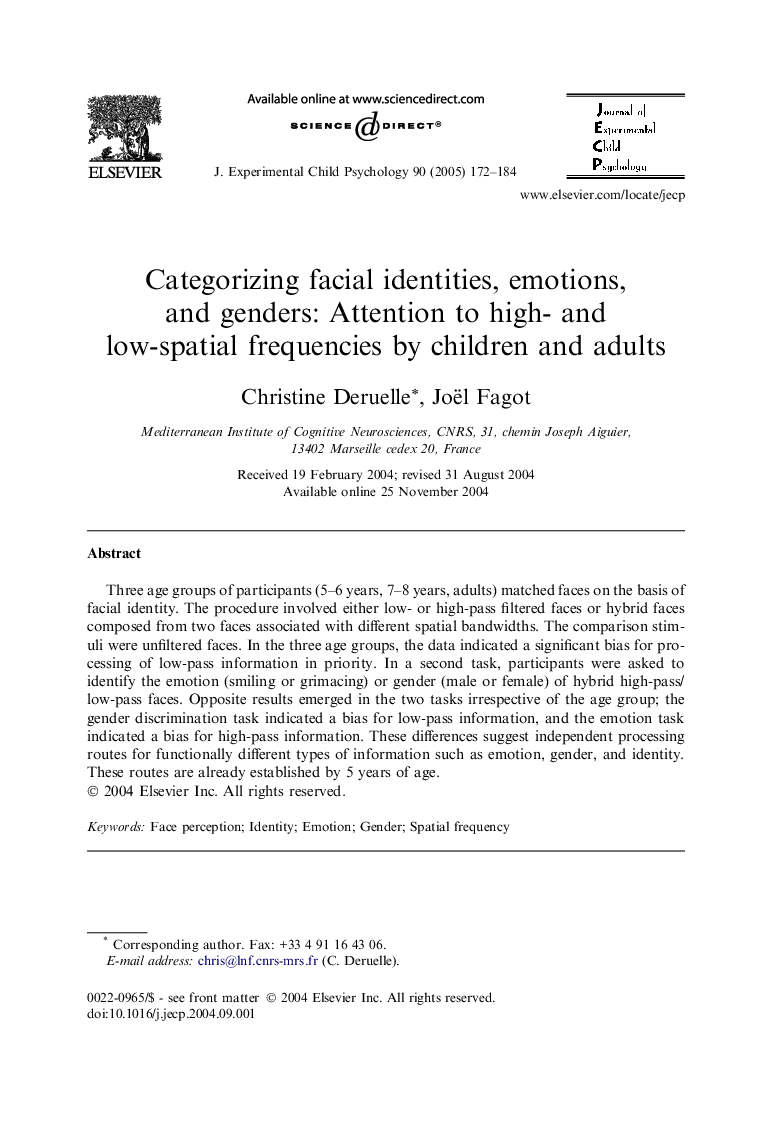| Article ID | Journal | Published Year | Pages | File Type |
|---|---|---|---|---|
| 10453244 | Journal of Experimental Child Psychology | 2005 | 13 Pages |
Abstract
Three age groups of participants (5-6 years, 7-8 years, adults) matched faces on the basis of facial identity. The procedure involved either low- or high-pass filtered faces or hybrid faces composed from two faces associated with different spatial bandwidths. The comparison stimuli were unfiltered faces. In the three age groups, the data indicated a significant bias for processing of low-pass information in priority. In a second task, participants were asked to identify the emotion (smiling or grimacing) or gender (male or female) of hybrid high-pass/low-pass faces. Opposite results emerged in the two tasks irrespective of the age group; the gender discrimination task indicated a bias for low-pass information, and the emotion task indicated a bias for high-pass information. These differences suggest independent processing routes for functionally different types of information such as emotion, gender, and identity. These routes are already established by 5 years of age.
Related Topics
Social Sciences and Humanities
Psychology
Developmental and Educational Psychology
Authors
Christine Deruelle, Joël Fagot,
